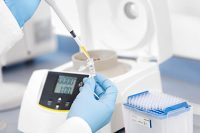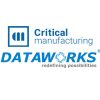In vitro diagnostic (IVD) devices are medical devices used to perform tests on human specimens such as urine, blood, or tissue, to help diagnose diseases or monitor health conditions. IVD devices play a crucial role in healthcare, as they enhance accurate diagnoses and treatment decision for healthcare professionals.
The European In Vitro Diagnostic Regulation ((EU) IVDR 2017/746) regulates the manufacture, distribution and maintenance of IVD devices. The regulation aims to ensure the safety and performance of IVD devices, while also improving public health outcomes. IVDR establishes new requirements for the design, development, and manufacturing of IVD devices, as well as for their clinical performance evaluation, market surveillance, and post-market surveillance.
The IVDR has significant implications for the manufacturing of IVD devices, as it requires manufacturers to comply with new and more rigorous regulatory requirements. Manufacturers must ensure that their devices meet the new safety and performance requirements, establish a quality management system, conduct clinical evaluations, and ensure ongoing compliance with post-market surveillance requirements. The IVDR also requires greater transparency and traceability throughout the supply chain, from the manufacturer to the end user, to improve the traceability and safety of IVD devices.
Wiktoria Banczyk, Product Manager of Lab Filtration Medical Devices at Sartorius Lab Instruments, discusses the challenges posed by the implementation of EU IVDR 2017/746 and key considerations for manufacturers.
What challenges do manufacturers of IVD products face when navigating the regulatory landscape, and how can they overcome these challenges?
Banczyk: Manufacturers of IVD products face several challenges when navigating the regulatory landscape, particularly under the EU IVDR. One of the most significant challenges is the increased scrutiny of notified bodies, who are responsible for assessing and certifying the compliance of IVD products with the new regulation. Notified bodies are expected to carry out more rigorous assessments of manufacturers’ compliance with the regulation, which may result in delays or additional costs for manufacturers seeking certification. Furthermore, greater transparency and traceability throughout the supply chain, from the manufacturer to the end user, is required to improve the traceability and safety of IVD devices.

Manufacturers also face challenges in meeting the evolving needs of customers and the market, such as the increasing demand for personalized medicine and the integration of IVD devices with other digital technologies. This requires a significant investment in research and development to develop new products and technologies that meet these needs, as well as the ability to adapt manufacturing processes to support these innovations.
To overcome these challenges, manufacturers of IVD products can take several steps, including:
- Establishing a comprehensive quality management system that covers all stages of the device lifecycle, from design and development to post-market surveillance. An international example of a Quality Management System is ISO 13485, which outlines the requirements for a QMS specifically to the medical device industry. A manufacturer that implements an ISO 13485-compliant QMS can demonstrate to regulators and customers that it has established and maintains a robust system for ensuring the safety and effectiveness of its products.
- Investing in research and development to develop new products and technologies that meet the evolving needs of customers and the market. Conducting regular market research and voice-of-customer interviews is the first step in identifying customer needs and preferences, as well as market trends and developments. Building strong relationships with notified bodies and regulatory authorities to ensure smooth certification and approval processes.
- Collaborating with other industry stakeholders, such as trade associations and academic institutions, to share best practices and drive continuous improvement in the IVD industry. In Germany, for example, the VDGH (Verband der Diagnostica-Industrie) – a trade association – is a great partner, representing the interests of more than 120 members, which are involved in the research, development, manufacture and distribution of laboratory analytical products and their precursors as well as patient self-tests.
What are the key considerations in the design and development of an IVD product for a manufacturer?
Banczyk: One of the most critical considerations in the design and development of an IVD product is ensuring that it delivers accurate and reliable clinical performance. This requires a thorough understanding of the target analyte(s) and the clinical application of the device. The manufacturer must conduct appropriate analytical and clinical studies to validate the performance of the device and establish its clinical utility. The manufacturer must also consider factors such as sample type, sample volume, and sample processing requirements, to ensure that the device is easy to use and delivers consistent and accurate results.
Another key consideration in the design and development of an IVD product is meeting the regulatory requirements, particularly under the new IVDR. Manufacturers must ensure that their devices meet the new safety and performance requirements, and establish a comprehensive quality management system that covers all stages of the device lifecycle. This includes requirements for risk management, clinical performance evaluation, and post-market surveillance. Manufacturers must also obtain certification from notified bodies, which will carry out rigorous assessments of the manufacturer’s compliance with the regulation.

When does a product become an IVD product and when can it be considered a general laboratory use (GLU) product?
Banczyk: A product becomes an IVD when it is intended to be used for the examination of human specimens, including blood, urine and tissue, in order to provide information for diagnostic, monitoring or compatibility purposes. IVD products can include reagents, instruments, and systems used to perform tests on samples for the detection, quantification, or measurement of specific analytes or biomarkers. The classification of a product as an IVD depends on its intended use and its compliance with applicable regulatory requirements.
IVDs have a direct impact on patient health and clinical decision-making, and as such, are subject to more stringent regulatory oversight to ensure their safety and effectiveness.
On the other hand, products intended for general laboratory use (GLU) do not provide diagnostic results for an individual (e.g., patient) and are not intended specifically for diagnostic applications. GLU products are therefore suitable for all general laboratory applications and can be applied in a broad range of scientific research or diagnostic sample preparation workflows. GLU products may include laboratory equipment, reagents, and consumables that are used in a laboratory setting for general laboratory purposes such as sample preparation for subsequent analytic methods. A common example for GLU are pipettes.

Sartorius Vivaspin® and Vivapore® ultrafiltration devices are the ideal starting point for the qualitative concentration and filtration of proteins and macromolecules from human body fluids, to reach the sensitivity required for accurate detection in subsequent (semi-)quantitative analysis.
Learn more about Solutions for Lateral Flow Assays & In Vitro Diagnostics Kit (IVD) Manufacturers here.
In summary, the impact of IVD regulations on manufacturing cannot be overstated. Manufacturers in the IVD industry must be proactive in their approach to regulatory compliance, as failure to do so can lead to serious consequences.
Furthermore, the IVD industry is expected to evolve rapidly in the coming years, with increased demand for personalized medicine, digital health, and other innovative technologies. Manufacturers will need to adapt to these changes and invest in research and development to develop new products and technologies that meet the evolving needs of customers and the market while ensuring compliance with IVD regulations.
Join our Newsletter to get the latest insights for IVD manufacturers.






